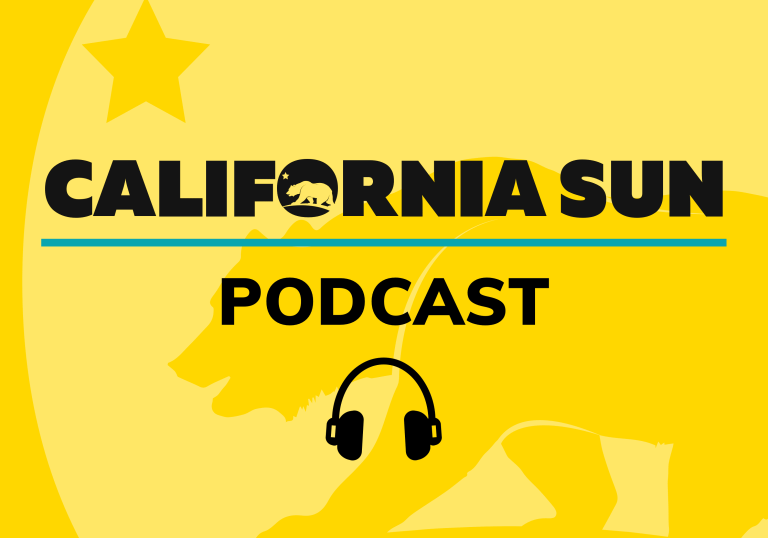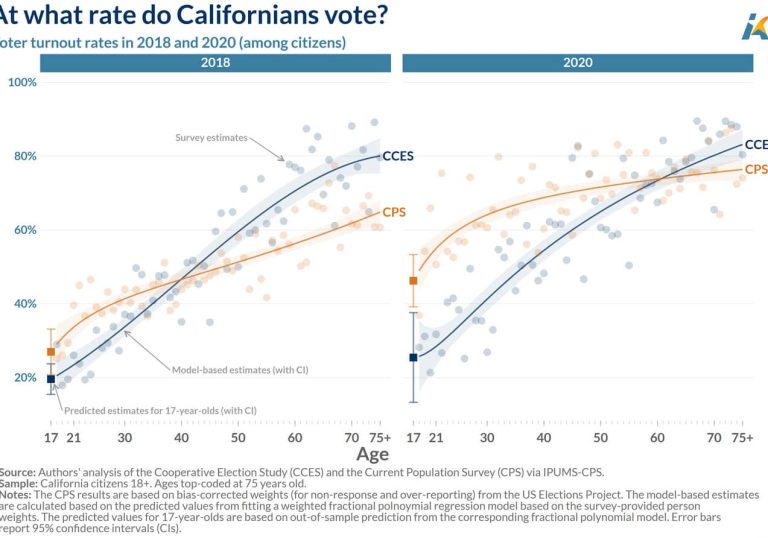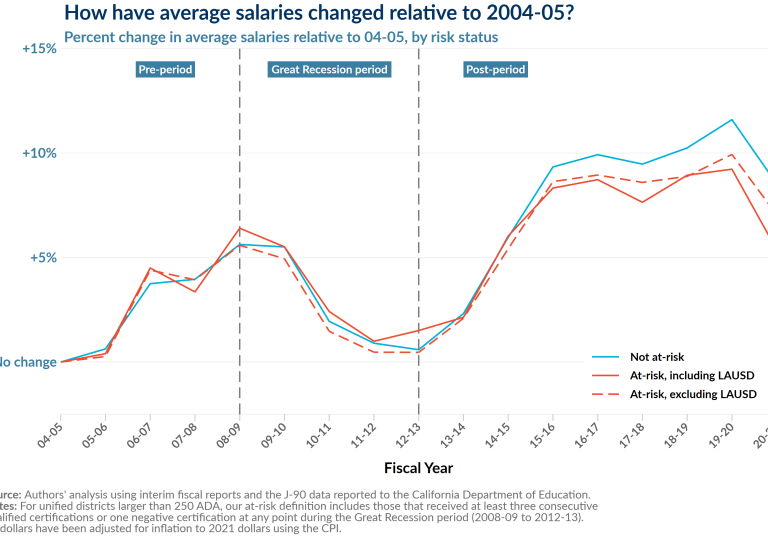As California grapples with a projected budget deficit of $22.5 billion for the upcoming fiscal year, state lawmakers are under immense pressure to balance the budget. This financial strain is exacerbated by the rising costs of healthcare, housing, and education, along with the need for robust climate change mitigation and adaptation measures. In this moment of extreme fiscal stress, the state may decide to make short-term cuts in order to balance the budget at the expense of important investments for younger and future Californians, putting on full display the generational tension inherent in how policymakers prioritize spending. How can the state balance the needs of an aging population while continuing to make important investments in future generations of Californians?
In light of these challenges, California could take this as an opportunity to draw on lessons from Canada’s federal government, which recently made a historic pledge to deliver “fairness for every generation” in its 2024 federal budget. This framework aims to address systemic intergenerational inequalities, focusing on creating sustainable and equitable policies for both current and future generations. This is a landmark win for our allies at Generation Squeeze and an important moment for other international groups that have been pushing for greater acknowledgement of intergenerational fairness by governments around the world.
Canada’s Approach: Prioritizing Intergenerational Equity
Canada’s federal budget explicitly acknowledges the need for policies that do not disproportionately favor one generation over another. This includes investments in housing, education, healthcare, and climate change mitigation to ensure younger generations are not burdened with the economic and environmental debts of their predecessors.
Canada and California face similar policy challenges this year
Both Canada and the state of California are navigating significant budget challenges in 2024. Despite the different scales of their economies and their unique political and economic contexts, they are facing several common public policy crises where generational tensions are on full display:
Addressing Housing Affordability: Housing affordability is a critical issue in Canada, where past policies have led to significant wealth accumulation for older generations through property ownership, while younger people struggle with high rents and property prices. The Canadian budget aims to tackle this by proposing measures to make housing more accessible to younger and future generations. It’s no secret that housing affordability is also a major concern for Californians and has been a top policy priority for the Governor and the state legislature in recent years. Despite these new policies, younger generations are still falling behind older generations when it comes to homeownership rates, and the state could be doing more to help younger cohorts that are struggling to make rent or enter the housing market.
Combating Climate Change: Canada’s budget emphasizes significant investments in climate change mitigation to safeguard the environment for future generations. This includes funding for renewable energy projects, conservation programs, and policies aimed at reducing carbon emissions. California has likewise long been a world leader when it comes to investments in renewable energy, setting ambitious targets for reducing greenhouse gas emissions across all sectors, and promoting sustainable land use practices. But with California at the forefront of the most disastrous consequences of climate change – from persistent draught, to extreme heat and increasingly more severe wildfires, to sea level rise along its coast – it’s vital for current and future generations of Californians that policymakers continue to prioritize significant funding to improve the state’s climate resilience.
Public Debt Management: The Canadian government is tackling the issue of public debt, recognizing that current fiscal policies should not saddle future generations with insurmountable debt. Measures include more prudent spending and ensuring that economic growth benefits are equitably shared across generations. California, too, has struggled with managing its growing debt in recent years. And while previous administrations have made progress to help pay down the “wall of debt”, California’s recent fiscal struggles coming out of the COVID-19 pandemic mean that the state is still struggling to implement a permanent debt reduction plan.
Turning California’s Fiscal Crisis into an Opportunity
Incorporating principles of intergenerational fairness into California’s budget during a severe fiscal crisis is undoubtedly challenging, especially when many programs will face cuts. However, it is vital that California lawmakers achieve a balance between immediate fiscal responsibility and long-term investments crucial to balance the diverse needs of all generations. Here are several ways California could take some lessons from Canada and embed intergenerational fairness into its policy-making process:
1. Prioritize Essential Services with Long-term Benefits: Focus on preserving and enhancing essential services that provide long-term benefits to all generations, such as healthcare, education, and infrastructure.
- Healthcare: Maintain funding for preventive healthcare programs to reduce future healthcare costs. For instance, Canada’s budget emphasizes healthcare sustainability by investing in preventive measures and ensuring the efficiency of healthcare services.
- Education: Protect and prioritize education funding, particularly for K-12 and higher education, to ensure future workforce competitiveness. Canada’s budget includes significant investments in education, recognizing its critical role in intergenerational equity.
2. Consider an Equitable Allocation of Budget Cuts: Ensure that budget cuts are distributed equitably across all sectors, minimizing the impact on vulnerable populations and essential services.
- Canada’s budget adopts a balanced approach to spending cuts by spreading them across various sectors rather than concentrating them in a few areas. This has helped to mitigate the potential adverse effects on any single sector or group.
- The government has also focused on reducing expenditures in areas with less direct impact on public welfare, such as certain administrative functions and non-essential government programs.
3. Sustainable Revenue Generation: Explore sustainable revenue generation methods that do not disproportionately impact younger or future generations. This could include:
- Canada’s budget proposes a new minimum tax on high-income individuals to ensure they pay a fair share of taxes. This measure targets individuals with substantial income who utilize various deductions and credits to significantly lower their tax liabilities
- The budget also proposes higher tax rates for the largest and most profitable corporations, particularly those in sectors that have seen windfall profits.
Canada’s promise of generational fairness provides a comprehensive framework that California lawmakers could use as a blueprint to address the state’s own intergenerational challenges. Emulating these strategies will require a concerted effort across various policy areas, but the long-term benefits for the state’s economic, social, and environmental health could be profound.









